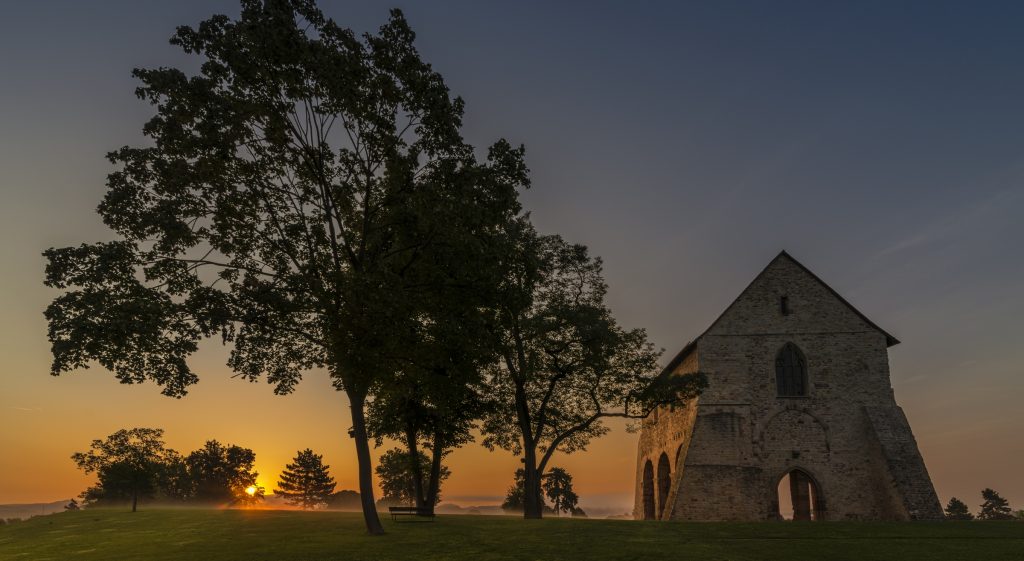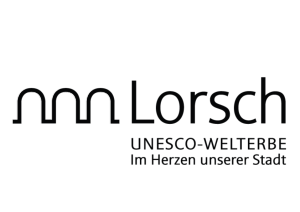
Lorsch Abbey
UNESCO Core Zone II
The path leads up to the gently curving monastery dune, on the back of which, visible from afar, stands the impressive fragment of the Basilica. In addition to this church remnant and the astonishingly well-preserved king’s hall, the nine hundred meter long section of the former monastery wall from Carolingian times still remains there. All the other buildings in the extensive complex dating from over 1250 years ago fell victim to war and human destruction.
One can therefore speak of Lorsch Abbey as a ninety-percent ground monument, from which one had and still has to wrest all knowledge of its undisputed importance and power. The redesign and revision of the entire hill in 2014 by topothek 1 boldly acknowledged the fact that Charlemagne’s famous imperial abbey was almost completely razed to the ground over the centuries.
The monastery wall was cleared of vegetation and restored. The floor plans of the former convent, which we can be sure of today, have since been indicated by depressions in the ground. The bushes and weeds on the overgrown terrain were removed, various gardens located there were relocated and replanted, the contour lines of the sand dune were carved out, and the view of the nearby Odenwald forest across the plain to the east was opened up again. The newly created herb garden based on the Lorsch pharmacopoeia with its more than 200 medicinal and aromatic plants moved to a sheltered location south of the elongated tithe barn on the so-called Spittelsberg. The tithe barn itself became a “storehouse of knowledge” and today houses objects from more than 200 years of excavation history at Lorsch Abbey.
The result is an auratic place that welcomes and impresses people beyond its historical significance with its vastness, clarity and contemplative silence. A place of spirituality and the spirit.



